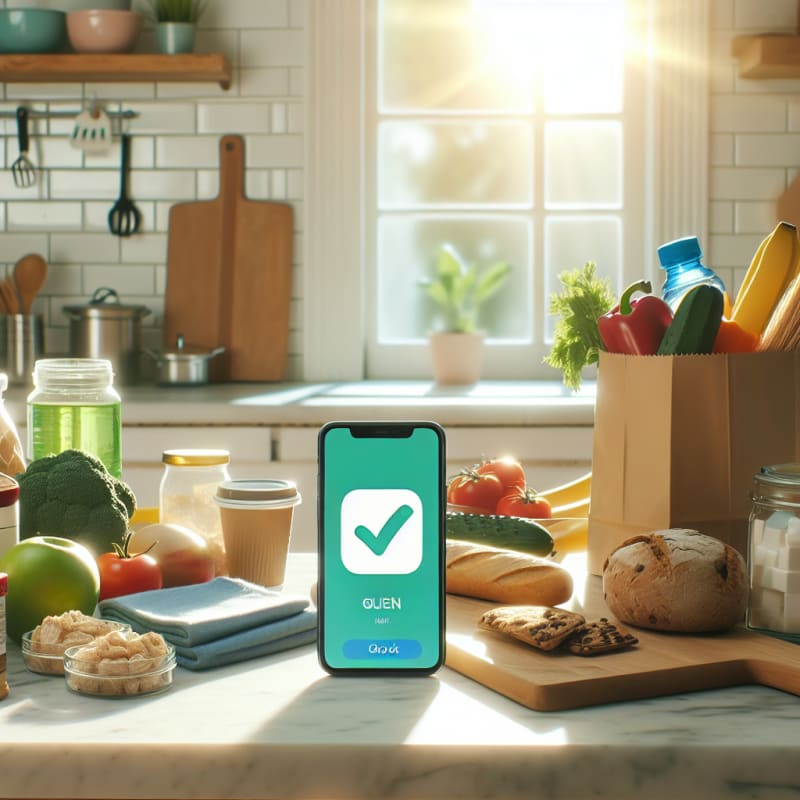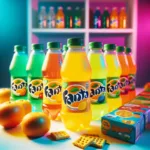Scan Your Food For Gluten – Here’s How
Category: Generic Scanners
Modern consumers are increasingly vigilant about the ingredients in their food, especially when it comes to allergens and dietary restrictions. Whether you are living with celiac disease, gluten sensitivity, or simply seeking to make informed choices, understanding how to scan your food for gluten is essential. This article explores the latest technologies, regulatory frameworks, and practical strategies for identifying gluten in your food—wherever you are in the world.
Why Scanning Food for Gluten Matters
Gluten, a protein found in wheat, barley, and rye, can trigger serious health issues for individuals with celiac disease and non-celiac gluten sensitivity. According to the U.S. Food and Drug Administration (FDA), even trace amounts of gluten can cause adverse reactions1. In Europe, the European Food Safety Authority (EFSA) enforces strict allergen labeling to protect consumers2.
- Health Impact: Gluten exposure can result in digestive issues, nutrient deficiencies, and long-term complications for sensitive individuals.
- Consumer Trust: Accurate labeling and reliable scanning tools foster confidence in food choices.
- Global Mobility: Travelers face varying ingredient lists and labeling standards, making scanning technology invaluable.
How to Scan Your Food for Gluten: Methods and Technologies
Advancements in technology have made it easier than ever to determine whether a food product contains gluten. Here’s how you can scan your food for gluten effectively:
1. Ingredient List Analysis
Start by reviewing the ingredient list on packaging. In the U.S., the FDA mandates that any product labeled “gluten-free” must contain less than 20 parts per million (ppm) of gluten1. In the EU, Regulation (EU) No 1169/2011 requires allergens, including gluten, to be clearly highlighted2.
| Region | Labeling Authority | Gluten-Free Threshold | Allergen Disclosure |
|---|---|---|---|
| United States | FDA | <20 ppm | Mandatory |
| European Union | EFSA | <20 ppm | Mandatory (highlighted in list) |
| Other Countries | Varies | Varies | Often voluntary |
2. Mobile Scanning Apps
Apps like Food Scan Genius leverage AI and barcode scanning to instantly analyze ingredient lists and flag gluten-containing products. These tools are especially useful for travelers or those shopping in unfamiliar markets.
- Barcode Scanning: Instantly retrieve product data and allergen information.
- AI Ingredient Analysis: Detect hidden sources of gluten, such as malt, modified food starch, or ambiguous “flavorings.”
- Personalized Alerts: Set preferences for gluten, dairy, nuts, and more.
“Food Scan Genius has transformed my grocery experience. I just scan, and it tells me if a product is safe. No more second-guessing labels!”
— Emily R., Food Scan Genius user (Download the app)
3. Portable Gluten Testing Devices
Handheld sensors like Nima or GlutenTox allow users to test food samples for gluten content. While effective, these devices can be expensive and require consumable test capsules3.
- Accuracy: Generally reliable for detecting gluten above 20 ppm.
- Limitations: May not detect gluten in highly processed foods or complex dishes.
Understanding Gluten Labeling Laws: U.S. vs. EU
Labeling laws differ significantly between countries, affecting how easily consumers can scan their food for gluten.
United States
- FDA Regulation: “Gluten-free” labels require strict adherence to <20 ppm threshold.
- Voluntary Labeling: Manufacturers are not required to test for gluten if not labeling as gluten-free.
- Ambiguous Ingredients: Terms like “modified food starch” may not specify gluten source.
European Union
- EFSA Oversight: Allergen labeling is mandatory, with gluten-containing cereals highlighted.
- Comprehensive Disclosure: Ingredient lists must specify the source of each allergen.
- Cross-Contamination: “May contain” statements are common but not regulated.
For global travelers, apps like Food Scan Genius can bridge the gap by decoding local labeling practices and providing real-time safety assessments.
Scientific Evidence: The Importance of Gluten Detection
Research underscores the need for accurate gluten detection in foods:
- A 2018 PubMed study found that up to 32% of foods labeled “gluten-free” in restaurants contained detectable gluten4.
- The FDA has issued reminders to restaurants about compliance with gluten-free labeling1.
- According to the EFSA Journal, unintentional gluten exposure remains a risk even in regulated markets2.
Emerging news stories, such as The New York Times’ 2023 report on gluten in restaurant foods, highlight ongoing challenges for consumers5. Similarly, BBC News recently covered the rise of digital food scanners and their impact on public health6.
Step-by-Step Guide: How to Scan Your Food for Gluten
- Check the Label: Look for “gluten-free” certification and highlighted allergens.
- Use a Scanning App: Open Food Scan Genius, scan the barcode, and review the gluten status.
- Review Ingredient List: Identify hidden gluten sources (e.g., malt, hydrolyzed wheat protein).
- Test When in Doubt: Use a portable gluten sensor for high-risk or unlabelled foods.
- Stay Updated: Follow FDA and EFSA updates on labeling changes and recalls.
Food Scan Genius: Your Partner in Gluten Detection
Food Scan Genius is designed for anyone with food sensitivities or dietary preferences. Its AI-driven platform enables you to:
- Scan barcodes and ingredient lists for gluten and other allergens
- Receive instant safety alerts and alternative product suggestions
- Customize your dietary profile for personalized recommendations
- Access global databases to decode ingredient lists in multiple languages
With over 1 million downloads and a 4.8-star rating, Food Scan Genius is trusted by users worldwide. Download Food Scan Genius today and take control of your food choices—wherever you are.
Frequently Asked Questions
How accurate are mobile scanning apps for detecting gluten?
Apps like Food Scan Genius rely on up-to-date product databases and AI analysis. They are highly accurate for packaged foods but may be less reliable for homemade or restaurant dishes.
What should I do if a label is unclear or missing?
If in doubt, avoid the product or use a portable gluten testing device. Scanning apps can help decode ambiguous ingredients, but direct contact with the manufacturer is advisable for certainty.
Is gluten labeling mandatory worldwide?
No. While the U.S. and EU have strict regulations, many countries have voluntary or inconsistent labeling standards. Always check local laws and use scanning technology when traveling.
Can cross-contamination occur in “gluten-free” foods?
Yes. Even certified gluten-free products can be subject to cross-contamination during manufacturing. Look for third-party certifications and use testing devices for added assurance.
Conclusion: Empower Your Food Choices
In a globalized marketplace, the ability to scan your food for gluten is more important than ever. By understanding labeling laws, leveraging AI-powered apps like Food Scan Genius, and staying informed through scientific research and news, you can confidently navigate any food environment. Whether you’re at home, shopping abroad, or dining out, technology empowers you to make safe, informed decisions—one scan at a time.
Ready to take control of your dietary needs? Download Food Scan Genius and start scanning your food for gluten today.





